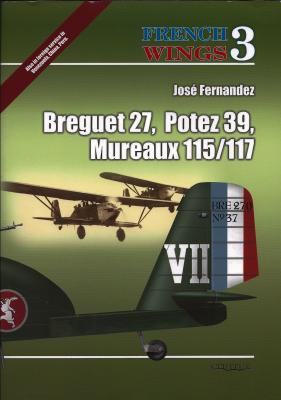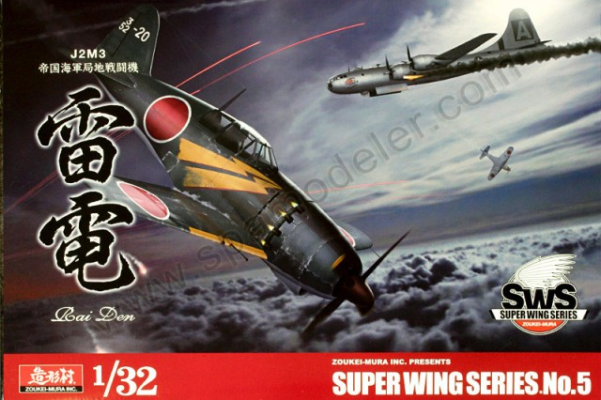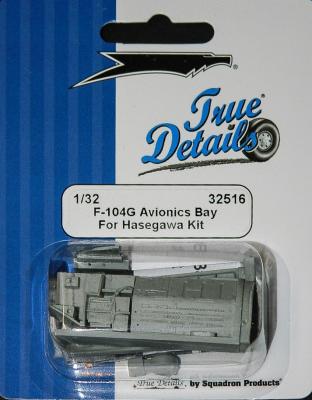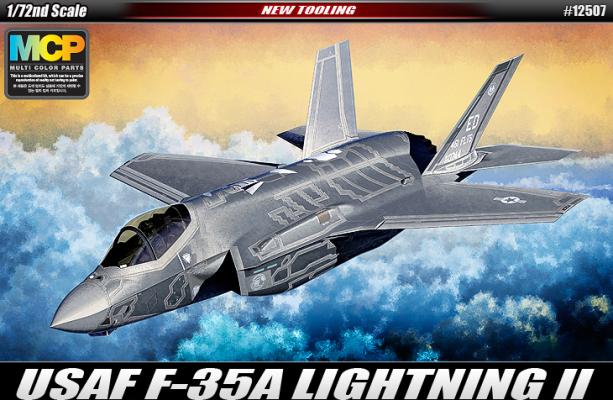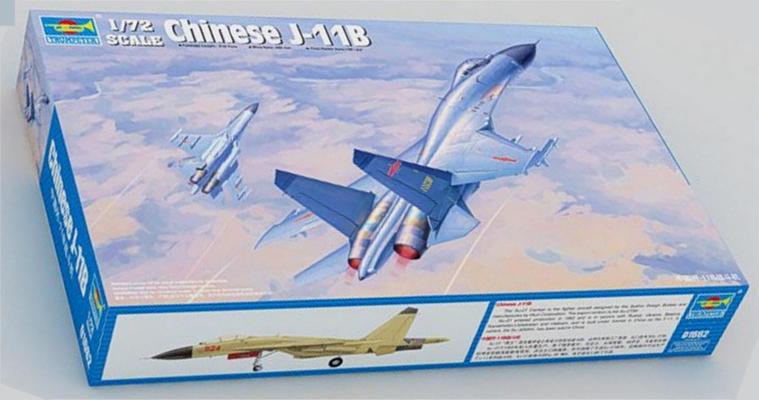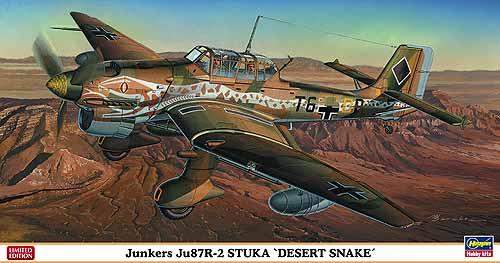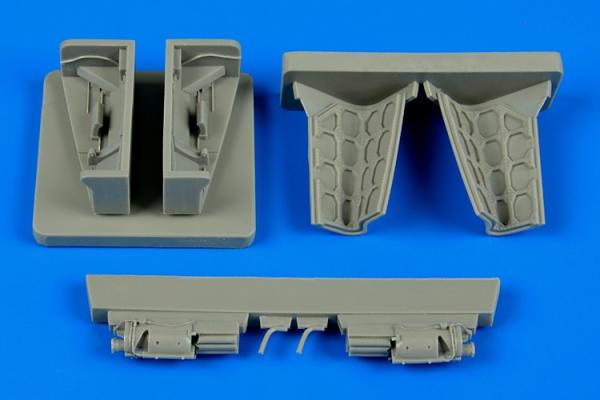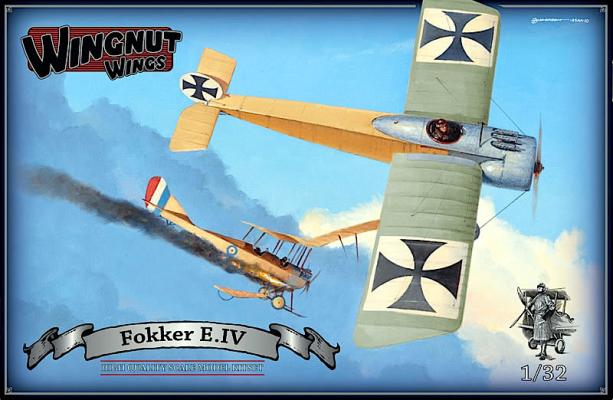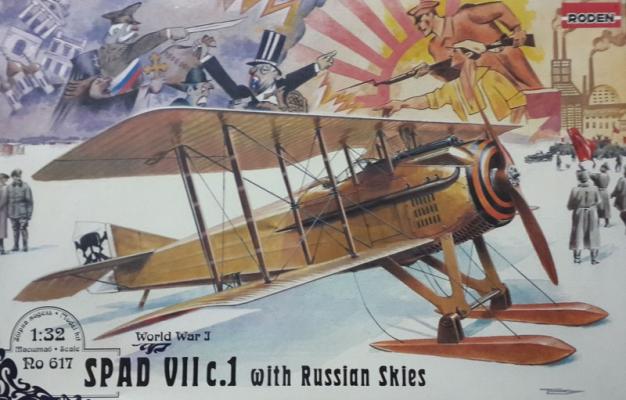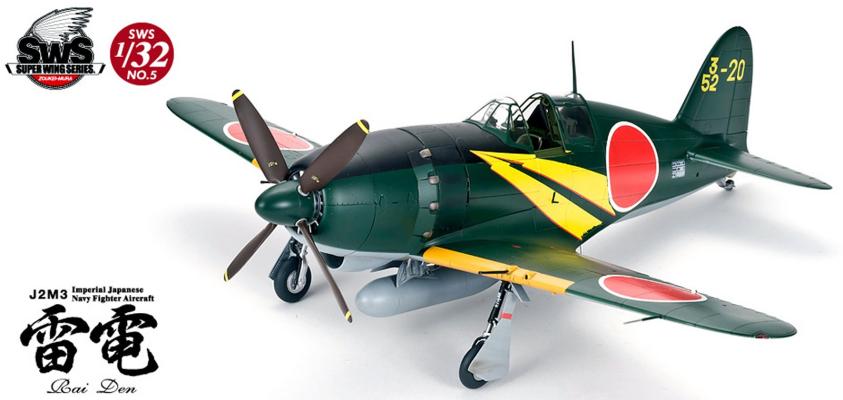This is the third book in the French Wings series and it continues to provide an interesting and informative look at some of the less famous French aircraft of the pre-WWII and WWII period. All three aircraft in this book were used in the observation and reconnaissance role by the French military. The book gives you information about both the process by which they were acquired and their actual operational use. In addition to the aircraft used by France, their use by China, Peru and Venezuela are also discussed.
Part 2: The Build
This is the second part of my review of the Zoukie-Mura 1/32 J2M3 ‘Jack”. See Part 1 for images of the sprues and a general overview of what is included with the kit.
Section 1
The engine… and what an engine it is. There are forty-three parts broken over ten steps. Assembly begins by gluing the cylinder banks together. I was too aggressive in removing the sprue attachment points here so I had to fill some seams along the baffle plates. The cylinders were painted in Alclad aluminum and the crankcase hand-painted in gloss black. A dark wash was applied over the aluminum to make the details pop out. A lot of parts build off of the cylinders, so it is critical that everything aligns. Fortunately the instructions provide excellent detail as to where everything fits.
True Details has created a 1/32 scale resin F-104G Avionics Bay that is designed to be a simple addition to Hasegawa’s kit. Simply clean up the casting block, paint and install. The detail is well defined, and will add just what is needed to this model. I have not checked to see if this set would work on the new Italeri F-104G/S, but in my opinion it probably would, however, you’ll want to check the fit yourself if you have one.
In the end, very nicely done, and a full score for True Details.
Thanks very much to our great supporters at Squadron for providing us yet another simple resin upgrade for our AMS (Advanced Modeler Syndrome). IPMS/USA appreciates the opportunity to review your products!
Academy’s models have a great reputation these days. This 1/72nd scale F-35A is the most recent addition to the stable of excellence.
This kit is a gem from the excellent packaging to the multi-color parts, which actually make it easier to build (as explained below). The decals are great, the plastic superb and crisp, and the appearance of the finished model is stunning. This is a lot of accolades, but they are accurate. In my opinion, this is the definitive new F-35 kit.
The J-11B (NATO code name Flanker B+) is a Chinese version of the Sukhoi Su-27SK. The first 100 J-11A aircraft were built under license from Sukhoi. After those were completed, the license was suspended. Soon thereafter, the Chinese announced they had developed a multi-role version known as the J-11B.
The Stuka - one of the most notorious aircraft for World War II. Hasegawa gives us a kit of the R-2 version used in Libya during the North African campaign in mid-1941. The R version was an extended range B model that increased the planes range from 600km (372 miles) to 1530km (950miles) with the added fuel tanks on the wings.
There are 118 of light gray plastic and seven clear plastic parts on six sprues in this “Limited Edition” kit. We get a large decal sheet with markings for two aircraft used in North Africa. The instruction sheet is logically laid out on four sheets with two addition sheets being the black and white color / decal schemes. An interesting note is that on the box top and instruction sheet, the swastika is shown as a diamond on the tail, I guess they don’t want to offend anyone. I did have a few scratches on the clear parts, since they were not in a protective bag.
Items Reviewed
- Aires, #4605 (Gun bay), $16.50
- Aires, #4606 (Speed brakes), $16.50
- Quickboost, #48558 (Gun muzzles), $5.00
- Quickboost, #48566 (Antennas), $6.50
These upgrades ramp-up the level of detail for the Kittyhawk Jaguar 1. Quickboost is a subdivision of Aires, so it’s the same manufacturer with the idea of simple, lower cost additions to upgrade things not requiring a major aftermarket effort… such as antennas.
Built on the principle of more is better, the Fokker E. IV was an attempt to improve on the legendary aircraft responsible for the “Fokker scourge” of 1915. First was the addition of a twin row 14 cylinder Oberursel engine which developed 160 hp. Then, at least in the prototype, three IMG machine guns were installed on the upper cowl firing through the propeller arc via an interrupter gear (which didn’t always work). These improvements seemed better in theory but combat revealed some shortcomings. The guns were reduced to two Spandaus since three machine guns which were prone to failures overloaded pilots. In addition, the weight of guns/ammo combined with a spinning mass of engine up front proved a handful. The allies by this time were producing very maneuverable aircraft that a wing warping design simply couldn’t match. The Fokker Einedeckers domination of the skies over the front was over by December of 1916.
Background
The sturdy French built SPAD VII c.1 made its appearance on the Western Front in mid-1916. Although many French pilots considered the SPAD VII to be inferior to the Nieuport 17 as a dogfighter, it nevertheless proved to be a reliable and rugged fighter and was more than a match for any Central powers aircraft it encountered. The real strength of this aircraft was its durability in a dive and that it could take a lot of punishment and still stay airborne. SPADs were soon in production in Great Britain, as well as in Russia. In the spring of 1917, Russia received 43 SPAD aircraft which proved to be popular with Russian pilots. This original batch of SPADs was supplemented by 100 more SPAD VIIs manufactured by the Dux factory under license.
NOTE: The Concept Notes have MSRP of $22.00
Part 1: Overview
The fifth Super Wing Series kit from Zoukei-Mura (ZM) is the Mitsubishi J2M3 Raiden (Allied code name ‘Jack’). I have the Hasegawa kit of the same aircraft in my stash, but when ZM kit arrived, I was very surprised at the size of the box. The kit box is substantially larger than the Hasegawa box, and it is full of plastic. Lots and lots of plastic. The lift-off box top is beautifully rendered in glossy artwork featuring the J2M3 of Lt. JG Yoshihiro Aoki, with views of the actual model on the sides.
Inside there are nine individually wrapped sprues of light gray plastic and two sprues of clear, with a total of 247 parts. There is a single decal sheet, a small sheet of paint masks, and the most comprehensive instruction manual I’ve ever seen (more on that in a minute). Also included with the review was the ZM Concept Notes.

